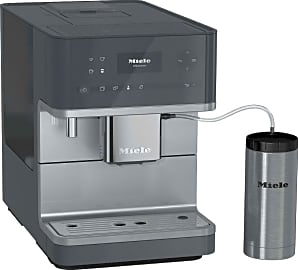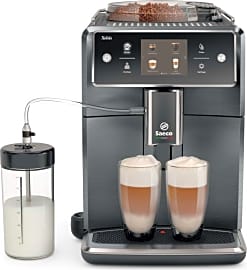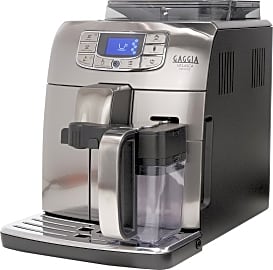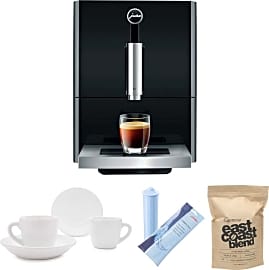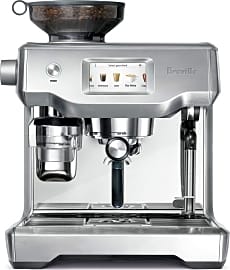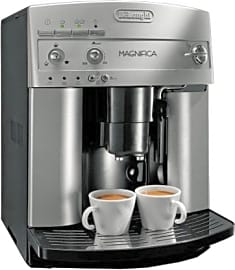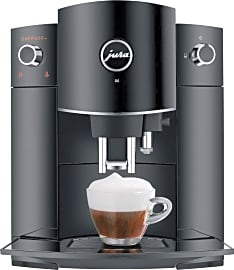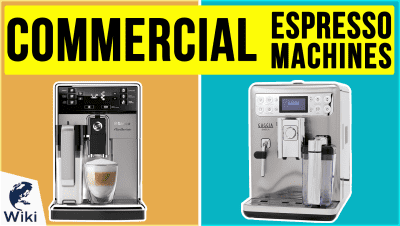The 10 Best Super Automatic Espresso Machines

This wiki has been updated 36 times since it was first published in October of 2016. Compared to the time-intensive ritual of standing in line for a professional barista to serve up a cappuccino, mocha, or latte in a paper cup. These super-automatic espresso machines offer a remarkably cost-effective and convenient at-home alternative to getting your coffee fix just the way you like it. These hi-tech solutions to your morning ritual will save you money as well as time. When users buy our independently chosen editorial picks, we may earn commissions to help fund the Wiki.
Editor's Notes
November 24, 2020:
While all the models we removed from the list were good, the four that we removed were simply unavailable or just too old to justify their inclusion at the cost of more modern automatic espresso machines. The Jura D6 Automatic replaced its predecessor as it is five years newer and more easily available. The one-switch operation makes it one of the more simple options on the list. Jura is a powerhouse of a brand in coffee making, and this is reflected in the addition of the Jura A1 Ultra Compact, which also replaces a slightly older, but very similar and popular model at a better price. The new bundle even includes coffee, cups, and saucers.
The Breville BES990BSS is an impressive unit that has touch-screen operation while retaining a classic look in brushed stainless steel. With automatic tamping and grinding, it can claim to be a complete system. The JURA S8 Automatic is packed with the latest technology, comes with an app to customize your drink choices and grind size, and even the texture and temperature of your milk. It was an easy addition to what was already a strong list.
June 20, 2019:
We said goodbye to a pair of items from our previous ranking, which, upon closer inspection, failed to meet the standards set by the term 'super-automatic.' I'm referring to the models by Breville, specifically the Barista Express and the Oracle. While competent espresso machines in their own right, both required the user to tamp and align their own grounds and froth their own milk, two duties than any super-automatic unit worth its salt should do for you. Replacing those are the Italian-made Monza Quick Mill and the Saeco Xelsis, the latter of which boasts an impressive interface that could let your customers or coworkers make their own drinks with ease. The Jura Impressa XS90 jumped up to our number one spot on the strength of its high-quality pump and burr grinder. Slipping to number 10 was Jura's C65, as there's a pretty stark difference in the quality of grinder used on this model, which can be a bit moody at times, resulting in inconsistent grounds.
Special Honors
Jura Z8 With one of the most immediately understandable menu systems out there, this options offers ease of use like no other. It's got 21 drinks for you to choose from, so it can satisfy just about anyone's tastes, but it does take up a bit more space on the counter than some others. wholelattelove.com
Nuova Simonelli Talento This is a model that only really belongs in the nicest coffee shops. It comes with a pair of hoppers and offers some of the most advanced computer-controlled operations on the market. It even has an excellent self-cleaning function, but there's no getting around the fact that it'll cost you as much as a new Honda Civic. simonelliusa.com
Jura Giga X7 Professional If you need to frequently produce a lot of different drinks, this machine essentially offers you two systems housed in the body of one, with a pair of grinders, boilers, and milk systems that can draw from either hopper or create a mixture of beans from each. It's definitely too expensive for most consumers, but it'll fit in nicely in a high-end office or a busy coffee shop. wholelattelove.com
A Brief History Of Espresso
The drink began to spread to the English-speaking world in the 1950s, with many young people preferring coffee houses to bars.
The origin of coffee dates back to about the 10th century C.E., or possibly even earlier. No one knows what prompted the first person to look at some beans and say, "I'm going to boil those things and drink their juice," but I think we can all agree that that person is history's second-greatest genius.
History's greatest genius, of course, is Angelo Moriondo, the man who looked at that bean juice and said, "I'm going to try to make that way stronger."
Moriondo attempted to make an instantaneous coffee-brewing device, and he patented his machine in Turin in 1884. He then entered it into the General Expo of Turin, where it won the bronze medal. One can only assume that the gold and silver medals went to a time machine and the cure for cancer.
Moriondo never did much more to promote his machine, but a fellow Italian, Luigi Bezzera, saw it and set out to make improvements. His new and improved model was bought by a manufacturer, and espresso machines went into mass production in 1905.
Espresso quickly became popular among Italians, in part because the government set price controls on its sale. The drink began to spread to the English-speaking world in the 1950s, with many young people preferring coffee houses to bars. In America, lattes and cappuccinos became especially popular, particularly in northeastern cities like Boston and New York.
In the 1970s, specialty coffee chains began popping up, like one little franchise called Starbucks. Coffee drinks, including espresso, were now no longer relegated to early morning rituals, and coffee culture ruled supreme. People had gotten a taste of the caffeinated life, and soon many wouldn't be able to function without it. I mean, I guess it's possible to function without coffee and espresso, but why would you want to?
Drinking Espresso Is Good for You? Really?
As coffee drinking became more widespread, rumors that it was bad for your health also proliferated. Myths abounded, with some saying it was bad for your heart, while others complained that it was habit-forming.
However, it's beginning to look more and more like drinking coffee can actually be good for you. This is shocking — since when have fun things ever been good for you? It's true, though, and espresso can be one of the healthiest drinks of all.
Drinking a couple espressos can help boost your long-term memory, as it can improve the memory consolidation process.
Drinking a couple espressos can help boost your long-term memory, as it can improve the memory consolidation process. This effect had long been studied in bees, who are apparently under a lot of stress and can use a cup of joe every now and then, but it was only recently seen in humans. The bottom line, however, is that remembering to drink your coffee can help you remember other things as well.
Those who are at high risk of a stroke can also benefit from a couple shots every day. Coffee, including espresso, is full of antioxidants, which can help prevent and repair damage from free radicals to your brain and blood vessels. Of course, fruits and vegetables are great for this as well, but they won't help you stay awake all day at work.
Espresso may also lower your risk of Type 2 diabetes, which is becoming much more prevalent in the United States. It's not known for sure why coffee can help, but the fact that it gives you more energy — and can therefore make you more active — is likely at least partially behind it.
So, next time someone tells you that you drink too much coffee, simply explain to them that you're actually exercising.
Tips For Making The Perfect Espresso
Espresso, like all coffee drinks, is mostly water, so the first thing you need for a great shot is incredible H20. If your tap water isn't up to snuff, or if you're using flat water that's been sitting out for a few days, you're not going to be able to make fantastic espresso.
If your tap water isn't up to snuff, or if you're using flat water that's been sitting out for a few days, you're not going to be able to make fantastic espresso.
Also, like anything worth having in life, you're going to have to work for amazing coffee. This means keeping whole beans on hand, preferably in an airtight container, and grinding them up before each serving. Yes, it's more work — but it's worth it. You don't want your grind to be too fine or too coarse; something akin to granulated sugar is ideal.
Next, measure out the desired amount of coffee to put in the portafilter. As you might expect, use two scoops for a double shot, and use three or more scoops if you want other people to be able to hear your heartbeat from across the room. Tamp it down until it's nice and level, and now you're ready to pull your shot.
This is the part that separates the pros from the wannabes. You want the first part of the shot to be dark brown, then turn into a foamy golden stream. The entire brew should take about twenty to thirty seconds, leaving you with about a half-inch of crema on top.
Sometimes, it doesn't come out like that, however, and you end up with a shot that's too fluffy or too runny. You know what that means...it's time to try again. And then keep trying, again and again, until you can see the future.


